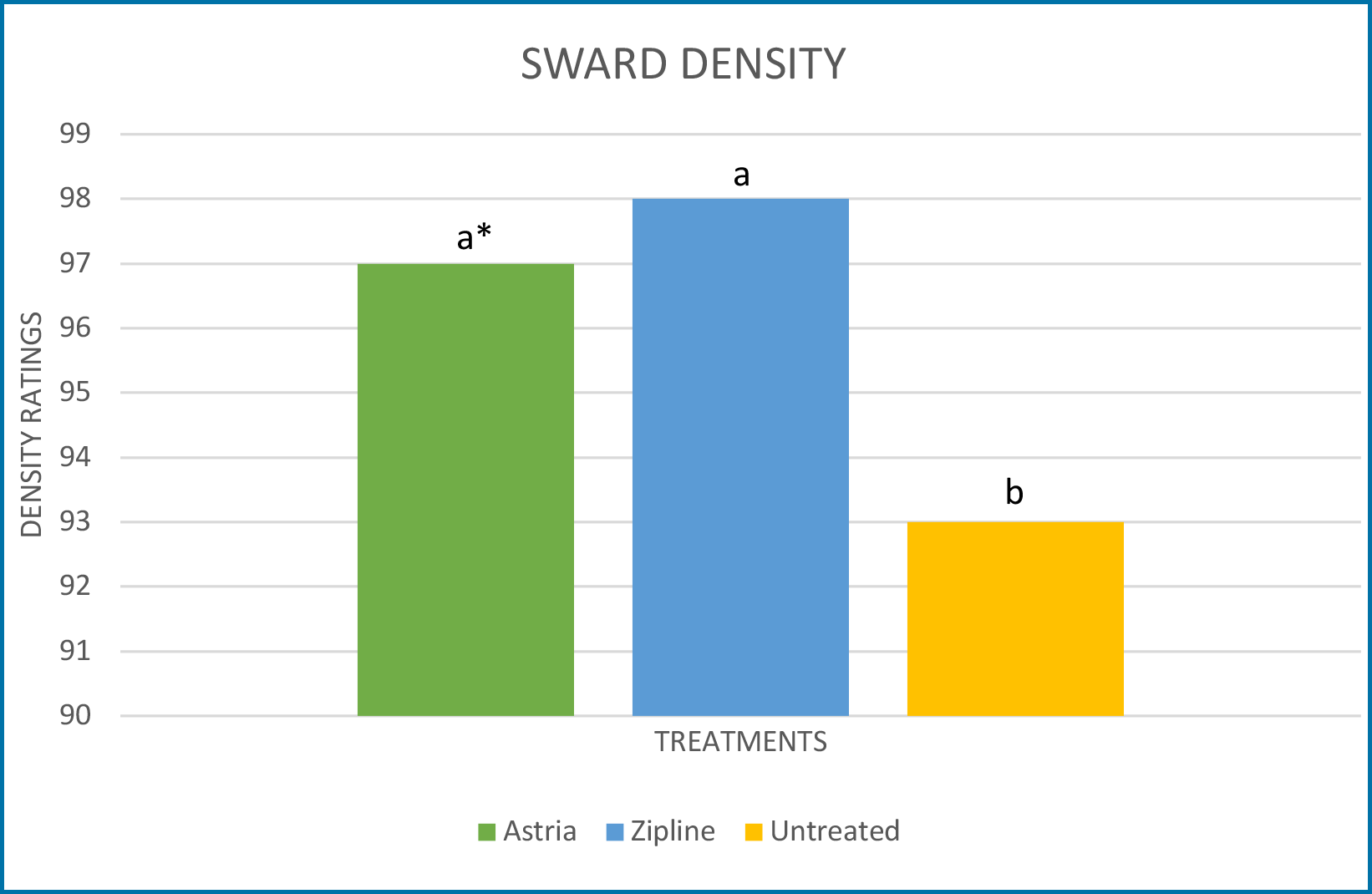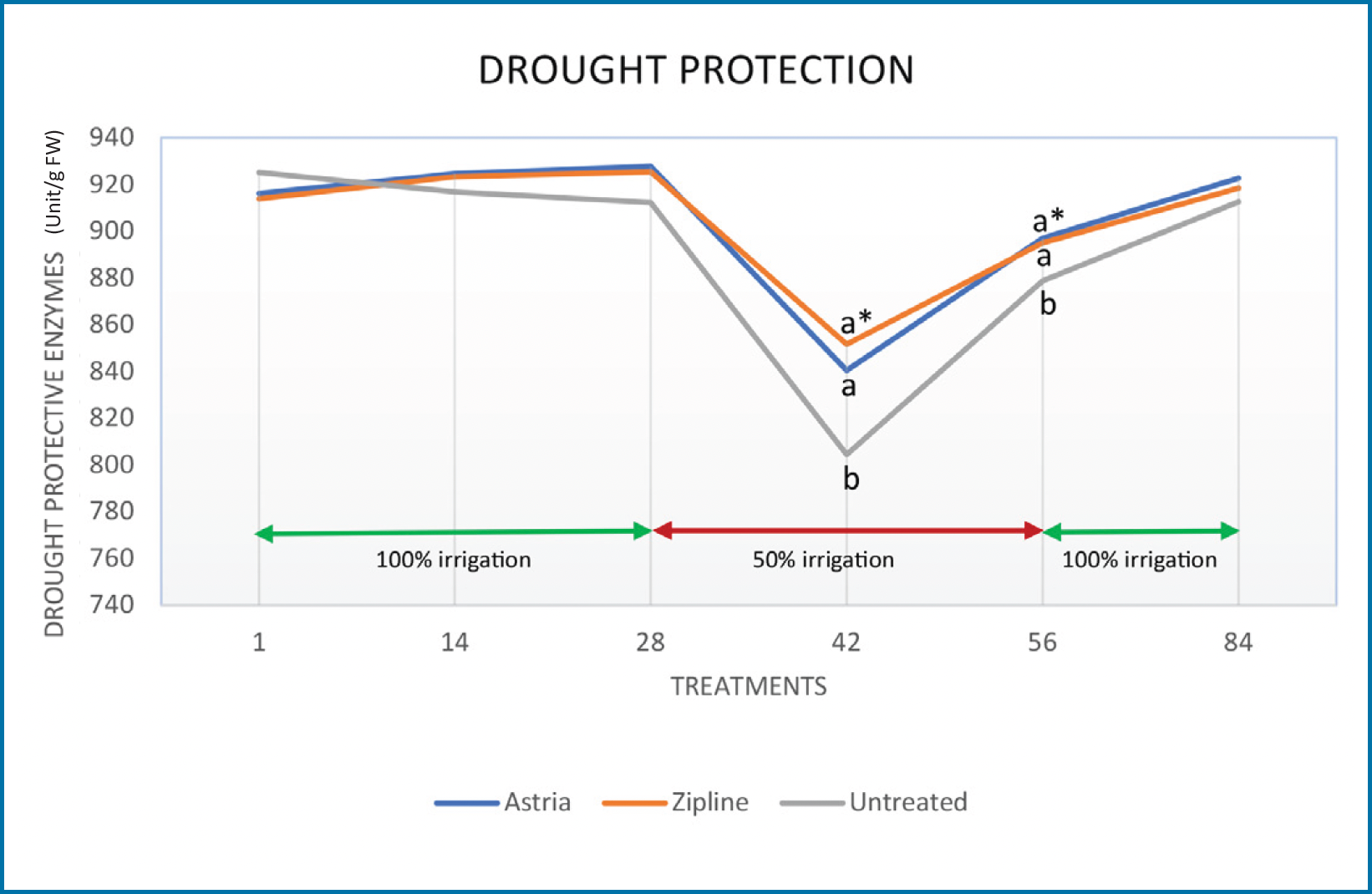Earn Points on Astria! See details for the 2024 Early Order Program.


100% NATURALLY DERIVED
Why Astria? Why Now?
For over 65 years, Aquatrols has earned a reputation for reliable, innovative solutions, and Astria is no exception. This unique formulation will meet or exceed the performance of conventional soil surfactants. End-users can rest assured that Astria will deliver superior soil moisture while reducing fossil fuel consumption, synthetic inputs, and landfill inundation.
We envision a world where our soil amendments safeguard natural resources without sacrificing turf health. To these ends, Aquatrols is committed to pioneering environmentally sound solutions to help forge a flourishing future for our green spaces.
KEY BENEFITS OF ASTRIA






Testing Astria
Trial Purpose
To determine if Astria performs as well as an industry standard soil surfactant (Zipline), in comparison to an untreated control. This field experiment included a period of drying conditions/abiotic stress which is known to initiate soil water repellency. Zipline was chosen as a competitive industry standard because, like Astria, it contains two surfactants and a plant health component.
Methods
Field Trials:
Sports Turf Research Institute (STRI) Redlands research facility, Queensland Australia on an established Tif-Eagle Bermudagrass(Cynodon dactylon vs transvaalensis) green, managed as fine turf, and established at USGA specification rootzone. Replicated field trials for 60 days.
Results:
Virginia Tech, Blacksburg, Virginia on creeping bentgrass (Agrostis stolonifera) to determine the production of drought
defensive enzymes (superoxide dismutase/SOD) under drought stress. Replicated lab trials for 90 days.
Results
Turf Color: Zipline and Astria exhibited better turf color than the untreated control
Turf Quality: Zipline exhibited the best quality, followed by Astria and the untreated control
Sward Density: Zipline and Astria exhibited better sward density than the untreated control
SOD Production: Zipline and Astria exhibited enhanced SOD production and turf recovery following drought stress
Figure 1. STRI field trial visual comparison between Astria, Zipline and Untreated Control after 60 days.





* means followed by the same letter are not significantly different, ANOVA (p < 0.005), LSD means separation (α = 0.05)
Results (cont’d)
Foliar application of ASTRIA every 14 days for 60 days (including during a dry down period) resulted in:
-
overall greener phenotype
-
enhanced quality which includes texture, smoothness and uniformity
-
improved turf density/number of shoots per unit area
-
increased leaf SOD activity and improved recovery during and following drought stress
Conclusion
*Bauters et. al (1998) demonstrated that poor irrigation may lead to development of soil water repellency, especially in high sand content soils such as USGA specification rootzone, thereby preventing water infiltration.
In field and laboratory trials, the application of Astria resulted in overall turf conditions that were on par with an industry standard (Zipline) when considering turf quality, color, and sward density, in both cool and warm season grasses. These measures are common predictors of overall turf health and vigor.
In addition, under abiotic stress such as drying conditions, the application of Astria resulted in improved turf health through water infiltration and retention, as well as improved recovery.
*Bauters, T. W. J., Dicarlo, D. A., Steenhuis, T. S., & Parlange, J. Y. (1998). Preferential flow in water-repellent sands. Soil Science Society of America Journal, 62, 1185-1190.
Directions for Use
What It Does:
ASTRIA is a proprietary surfactant that is specifically designed to optimize rootzone moisture and maximize plant performance in fine turfgrass.
Where to Use:
ASTRIA is recommended for use on fine turfgrasses such as those found on golf courses, athletic fields, and other highly maintained areas.
APPLICATION RATES AND FREQUENCY OPTIONS:
Greens, Tees, Fairways and Other Fine Turfgrass Surfaces:
Apply 4 oz to 6 oz per 1,000 ft2 every 28 days
Apply 2 oz to 3 oz per 1,000 t2 every 14 days
Watering In:
Astria requires about 0.15 inch of water on high sand rootzones or other soils with a sand top-dressing layer of four inches or more. On non-sand soils or “push-up” greens with less than a four-inch sand topdressing layer, apply up to 0.2 inches of water


Comments are closed.